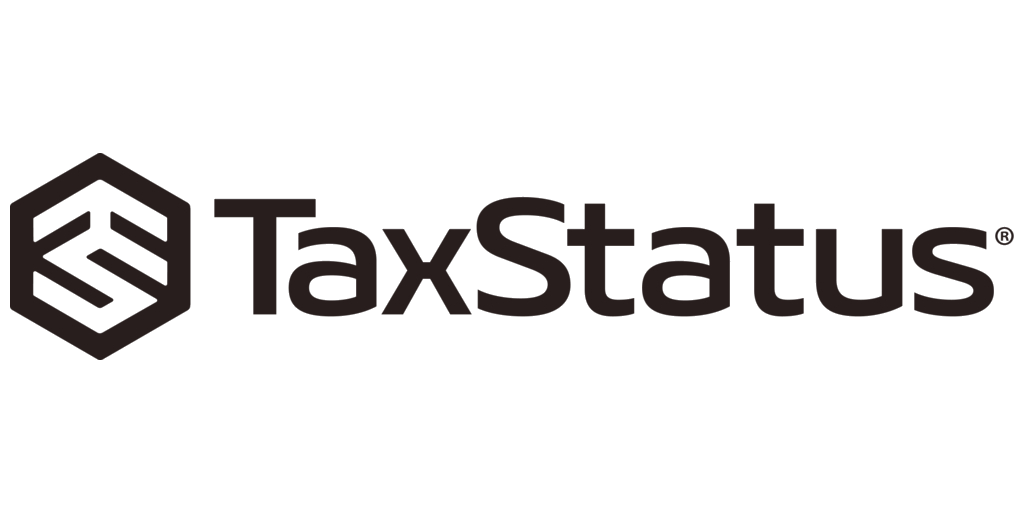22 Popular Tax Deductions and Tax Breaks for 2024-2025
A deduction cuts the income you're taxed on, which can mean a lower bill. A credit cuts your tax bill directly. Learn more about common tax breaks and write-offs — and how to claim them.

Many, or all, of the products featured on this page are from our advertising partners who compensate us when you take certain actions on our website or click to take an action on their website. However, this does not influence our evaluations. Our opinions are our own. Here is a list of our partners and here's how we make money.
Tax breaks are generally broken into two major categories: tax deductions and tax credits. As you examine programs that could potentially apply to you, it's a good idea to know the differences in how each benefit works.
In short, a tax credit gives you a dollar-for-dollar reduction in the amount of tax you owe. A tax deduction — also sometimes called a tax write-off — provides a smaller benefit by allowing you to deduct a certain amount from your taxable income.
Here are some of the most popular tax breaks and links to our other content to help you learn more.
22 popular tax deductions and tax breaks
The tax breaks below apply to the 2024 tax year (taxes due April 15, 2025, or October 15, 2025, with a tax extension).
1. Child tax credit
The child tax credit (CTC) is a tax break for families with children below the age of 17. For 2024, the credit is worth up to $2,000 per child, with $1,700 being potentially refundable. To qualify, you have to meet certain income requirements.
2. Child and dependent care credit
The child and dependent care credit (CDCC) is meant to cover a percentage of day care and similar costs for a child under 13, a spouse or parent unable to care for themselves, or another dependent so you can work. Generally, it's up to 35% of $3,000 of expenses for one dependent or $6,000 for two or more dependents.
3. American opportunity tax credit
The American opportunity tax credit, sometimes shortened to AOC, lets you claim all of the first $2,000 you spent on tuition, books, equipment and school fees — but not living expenses or transportation — plus 25% of the next $2,000, for a total of $2,500. It's also partially refundable, which means you can get up to $1,000 back if the credit zeros out your tax bill.
4. Lifetime learning credit
The lifetime learning credit lets you claim 20% of the first $10,000 you paid toward tuition and fees, for a maximum of $2,000. Like the American opportunity tax credit, the lifetime learning credit doesn’t count living expenses or transportation as eligible expenses. You can claim books or supplies needed for coursework.

on TaxStatus's Website
5. Student loan interest deduction
The student loan interest deduction lets borrowers write off up to $2,500 from their taxable income if they paid interest on their student loans. You don't need to itemize to take advantage of this deduction.
6. Adoption credit
The adoption credit is a tax break that helps taxpayers cover a certain amount of qualified adoption costs per child. The credit begins to incrementally decrease at certain income levels and completely phases out once your modified adjusted gross income (MAGI) exceeds the given threshold for that tax year. For the 2024 tax year, the credit maxes out at $16,810 and is phased out at a MAGI of $292,150 or more.
7. Earned income tax credit
The earned income tax credit (EITC) is a refundable tax break for low-income taxpayers with and without children. For 2024, the credit ranges from $632 to $7,830, depending on how many kids you have, your marital status and how much you made.
8. Charitable donation deduction
If you itemize, you may be able to write off the value of qualifying charitable gifts — whether they’re in cash or property, such as clothes or a car — from your taxable income. Per the IRS, you can generally deduct up to 60% of your adjusted gross income.
9. Medical expenses deduction
In general, you can write off qualified, unreimbursed medical expenses that are more than 7.5% of your adjusted gross income for the tax year.
10. Deduction for state and local taxes
You may deduct up to $10,000 ($5,000 if married filing separately) for a combination of property taxes and either state and local income taxes or sales taxes through a tax break known as the SALT deduction.
11. Mortgage interest deduction
The mortgage interest tax deduction is touted as a way to make homeownership more affordable. It cuts the federal income tax that qualifying homeowners pay by reducing their taxable income by the amount of mortgage interest they pay.
12. Gambling loss deduction
Gambling losses and expenses are deductible only to the extent of gambling winnings. So, spending $100 on lottery tickets isn’t deductible — unless you win and report at least $100, too. You can’t write off more than the amount you win.
13. IRA contributions deduction
You may be able to deduct contributions to a traditional IRA, though how much you can deduct depends on whether you or your spouse is covered by a retirement plan at work and how much you make.
14. 401(k) contributions deduction
The IRS doesn’t tax what you divert directly from your paycheck into a traditional 401(k). In 2024, you could have contributed a maximum of $23,000 ($30,500 if 50 or older). These retirement accounts are usually sponsored by employers, although self-employed people can open their own 401(k)s.
15. Saver’s credit
The saver's credit runs 10% to 50% of up to $2,000 ($4,000 if filing jointly) in contributions to an IRA, a 401(k), a 403(b) or certain other retirement plans. The percentage depends on your filing status and income.
16. Health savings account contributions deduction
Contributions to HSAs are tax-deductible, and the withdrawals are tax-free, too, as long as you use them for qualified medical expenses.
17. Self-employment expenses deduction
There are many valuable self-employment tax write-offs for freelancers, contractors and other self-employed people, including tax breaks for mileage, business insurance premiums, and business meals and travel.
18. Home office deduction
If you use part of your home regularly and exclusively for business-related activity, the IRS lets you write off certain home office deductions for associated rent, utilities, real estate taxes, repairs, maintenance and other related expenses.
19. Educator expenses deduction
If you’re a schoolteacher or other eligible educator, you can deduct up to $300 spent on classroom supplies. Spouses who are both educators and file jointly get a deduction of $300 each, making them eligible to claim up to $600 on their return.
20. Solar tax credit
The solar tax credit, also known as the "residential clean energy credit," can get you up to 30% of the installation cost of solar energy systems, including solar water heaters and solar panels.
21. Energy efficient home improvement tax credit
The energy efficient home improvement tax credit, revamped under the Inflation Reduction Act, allows homeowners who purchased qualifying home upgrades — such as energy-efficient windows, doors, and heat pumps — to recoup up to $3,200 on those investments when they file their tax returns.
22. Electric vehicle tax credit
The EV tax credit ranges from $3,750 to $7,500. Taxpayers can also get a credit of up to $4,000 for used cars. Eligibility depends on a number of rules, including income, price of the vehicle and whether the car meets IRS manufacturing guidelines for qualified EVs.

on TaxStatus's Website
What are tax deductions?
A tax deduction lowers your taxable income, reducing how much of your earnings are subject to tax. For example, if your taxable income is $120,000 and you are eligible to take $20,000 in deductions, the IRS will only tax you on $100,000 of income.
The lower your taxable income, the lower your tax bill.
How do you claim tax deductions?
Generally, there are two ways to claim tax deductions: Take the standard deduction or itemize deductions. You can’t do both.
The standard deduction is a flat-dollar, no-questions-asked reduction in your adjusted gross income. The amount you qualify for depends on your filing status. For example, in 2024, single filers who claim the standard deduction can subtract $14,600 from their taxable income. People 65 and older, or who are blind, get a bigger standard deduction. You can learn more about standard deduction amounts here.
Itemized deductions let you cut your taxable income by taking any of the hundreds of available tax deductions you qualify for. The more you can deduct, the less you’ll pay in taxes. There are dozens of itemized deductions available to taxpayers, but importantly, all of them have different rules. Examples of itemized deductions include unreimbursed medical expenses, charitable donations, and mortgage interest.
Which one is better? The standard deduction has gone up significantly in recent years, so you might find that it's the better option for you now, even if you've itemized in the past. On the other hand, there are dozens of itemized deductions available to taxpayers, and all of them have different rules. Your tax software or tax preparer can run your return both ways to see which method produces a lower tax bill.
» Ready to file? See our top picks for this year's best tax software.
What are above-the-line deductions?
Contributions to a retirement account or health savings account and student loan interest payments are referred to as "above-the-line" deductions, but it may be easier to think of them as "adjustments" to your income.
These deductions are subtracted from your gross income to determine your adjusted gross income (AGI). Your AGI is important because it is the starting point for calculating your tax bill and also the basis on which you might qualify for many other deductions and credits.
If you qualify for an above-the-line deduction, you can take it regardless of whether you itemize or take the standard deduction.
» Ready to crunch the numbers? Estimate your refund or bill with our tax calculator.
What is a tax write-off?
The IRS doesn't use the term "tax write-offs" anywhere in the Internal Revenue Code, but the phrase has gained popularity as a synonym for "tax deduction" over the years. If you hear someone talking about a tax write-off, they're probably referring to certain deductions itemizers can take to lower their taxable income.
In contrast, a tax credit is a reduction in your actual tax bill.
» MORE: Tax credits vs. tax deductions
ON THIS PAGE
ON THIS PAGE










